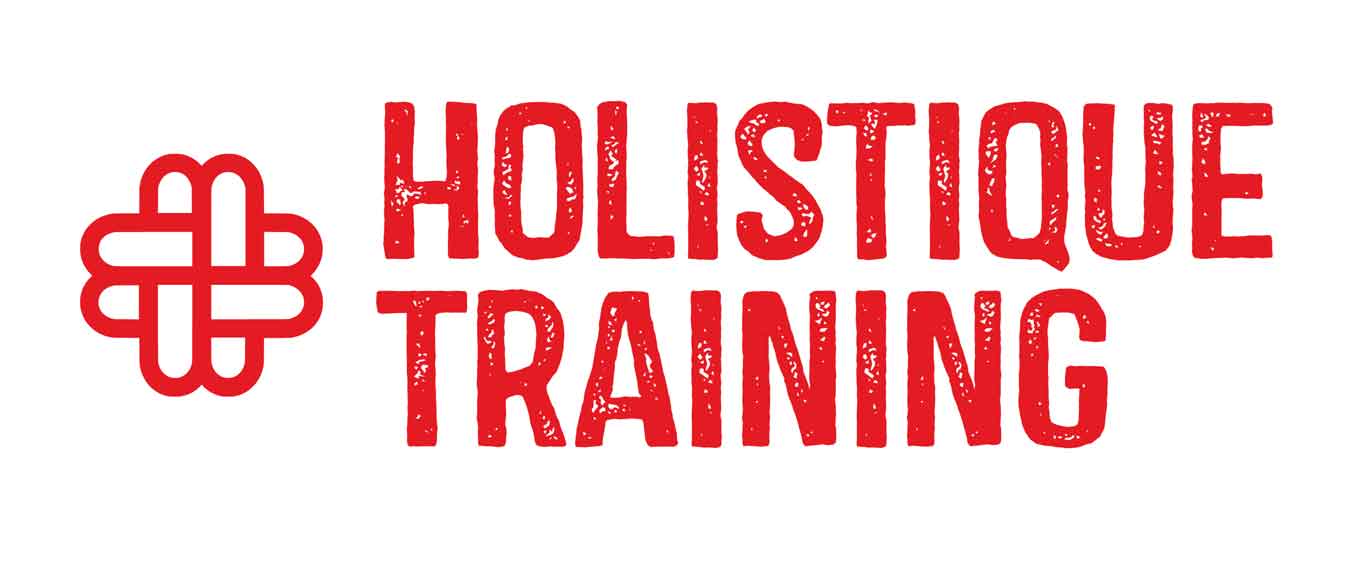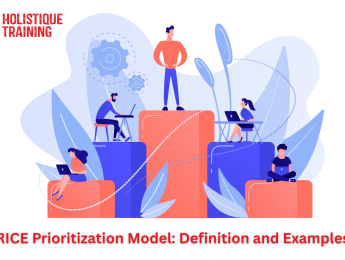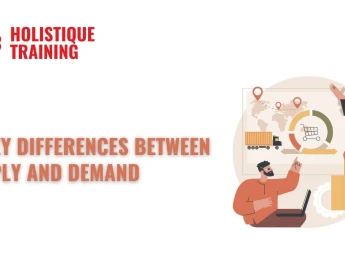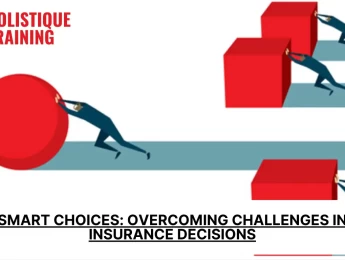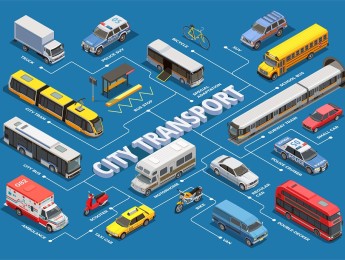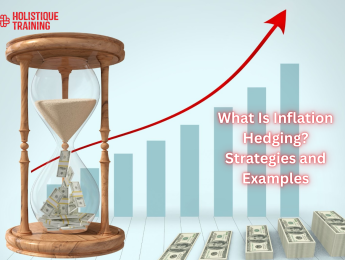- Table of Contents
- Introduction
- What is the RICE Scoring Model for Prioritization?
- History of the RICE Scoring Model
- Why is the RICE Model Important?
- 1. Objective Decision-Making
- 2. Focus on High-Impact Work
- 3. Efficient Use of Resources
- 4. Confidence in Decision-Making
- 5. Alignment Across Teams
- 6. Adaptability to Different Contexts
- 7. Avoiding "Shiny Object Syndrome"
- 8. Encouraging Long-Term Thinking
- How to Score Projects with the RICE Model
- 1. Determine Reach
- 2. Assess Impact
- 3. Evaluate Confidence
- 4. Estimate Effort
- 5. Calculate the RICE Score
- Tips for Using the RICE Model for Prioritization
- 1. Define Metrics Clearly
- 2. Use Realistic Estimates
- 3. Involve Stakeholders
- 4. Revisit Scores Regularly
- 5. Combine with Other Frameworks
- 6. Start Small and Iterate
- 7. Balance Quantitative and Qualitative Factors
- 8. Document Your Process
- Example of Using the RICE Model
- Conclusion
Introduction
Effective prioritization is the backbone of any successful project or product management strategy. With countless ideas, initiatives, and tasks vying for attention, how do you decide which ones deserve your focus? This blog post explores the RICE scoring model, a powerful framework designed to help teams prioritize their efforts with clarity and confidence. From understanding what RICE is, to its history, importance, and practical application, we’ll guide you through every aspect of this model. By the end, you’ll have the tools to make smarter decisions, ensuring your resources are allocated to the projects that truly matter.
What is the RICE Scoring Model for Prioritization?
The RICE scoring model is a prioritization framework that helps teams evaluate and rank initiatives based on four key factors: Reach, Impact, Confidence, and Effort. Each factor is assigned a numerical value, and the resulting score determines the priority level of the initiative. The formula is straightforward:
RICE Score = (Reach × Impact × Confidence) ÷ Effort
- Reach: How many people or customers will this initiative affect within a given time frame?
- Impact: How significant will the change be for those affected?
- Confidence: How sure are you about your estimates for Reach, Impact, and Effort?
- Effort: How much time, resources, or work will this initiative require?
By quantifying these factors, the RICE model enables teams to compare projects objectively, minimizing biases and emotional decision-making. It’s particularly useful for product managers, who often need to prioritize feature development, bug fixes, or marketing campaigns in fast-paced environments.
History of the RICE Scoring Model
The RICE scoring model was introduced by Intercom, a customer communication platform, as part of their broader approach to product management. Faced with the challenge of managing an ever-growing list of feature requests and ideas, the Intercom team sought a structured way to prioritize their work. They wanted a system that would go beyond intuition and gut feelings, instead relying on measurable criteria.
Intercom’s product team developed RICE as a way to balance competing priorities while accounting for the effort required to execute each initiative. Since its introduction, the RICE model has gained widespread adoption among product managers, agile teams, and organizations seeking a data-driven approach to prioritization.
While the RICE model is relatively new compared to other prioritization frameworks like the Eisenhower Matrix or MoSCoW, its simplicity and effectiveness have made it a go-to tool for modern teams. Its user-centric focus aligns well with today’s emphasis on delivering value quickly and efficiently.
Aspect | RICE Scoring Method | MoSCoW method |
Focus | Quantitative prioritization based on Reach, Impact, Confidence, and Effort. | Qualitative categorization into Must-haves, Should-haves, Could-haves, and Won’t-haves. |
Scoring Approach | Uses a formula to calculate a numerical score for each project. | Relies on subjective grouping based on necessity and desirability. |
Flexibility | Suitable for projects with measurable data and clear estimates. | Better for projects with unclear data or when quick decisions are needed. |
Complexity | Requires detailed estimates and calculations for each factor. | Simpler and faster but less precise in prioritization. |
Use Case | Ideal for ranking projects or features with measurable metrics. | Effective for defining scope in time-constrained projects. |
Why is the RICE Model Important?
Prioritization is a constant challenge for teams working under constraints. Whether it’s limited time, budget, or manpower, making the wrong choice about which project to pursue can have significant consequences. The RICE model is important because it provides a systematic, unbiased method for evaluating opportunities.
Here’s why the RICE model stands out:
1. Objective Decision-Making
Making decisions without a clear framework often leads to bias, whether intentional or not. People may prioritize projects based on personal preferences, assumptions, or the influence of high-ranking stakeholders. The RICE model eliminates much of this subjectivity by focusing on quantifiable metrics: Reach, Impact, Confidence, and Effort. These metrics force teams to evaluate initiatives through a consistent lens, reducing emotional or political influences.
For instance, when two projects seem equally important, the RICE score can reveal which one will have a greater overall impact relative to the effort required. This objectivity is especially important in cross-functional teams where differing perspectives can create conflicts over what should take precedence.
2. Focus on High-Impact Work
One of the greatest risks in project management is dedicating resources to initiatives that don’t generate meaningful results. The RICE model ensures that high-impact projects rise to the top of the priority list. By explicitly measuring Impact, teams are encouraged to think critically about the value a project will deliver to users or the business.
For example, a project that affects 10,000 users with a medium impact might rank higher than a project that affects only 500 users, even if the latter seems more exciting or innovative. This focus on measurable outcomes helps teams avoid the trap of prioritizing "nice-to-have" features over initiatives that truly move the needle.
3. Efficient Use of Resources
Time, money, and manpower are finite resources. The RICE model emphasizes the importance of balancing potential rewards with the effort required to achieve them. By including Effort in its calculation, the model helps teams avoid overcommitting to resource-intensive projects with minimal returns.
For example, a feature that requires 6 months of development but only benefits a small subset of users might score lower than a simpler feature that can be delivered in 2 weeks and benefits a larger audience. This ensures that teams are always working on projects that provide the highest return on investment (ROI).
4. Confidence in Decision-Making
Uncertainty is a natural part of planning, especially when dealing with new or experimental ideas. The Confidence factor in the RICE model allows teams to account for this uncertainty by assigning a percentage to reflect how sure they are about their estimates. This prevents teams from over-prioritizing initiatives based on shaky assumptions.
For instance, if a team is unsure about the projected impact of a new feature, they can assign a lower confidence score, which will naturally lower the RICE score. This ensures that more reliable opportunities are prioritized over speculative ones, reducing the risk of wasted effort.
5. Alignment Across Teams
One of the most underrated benefits of the RICE model is its ability to foster alignment and transparency. By clearly defining how priorities are determined, the model creates a shared understanding among team members and stakeholders. Everyone can see why certain projects are ranked higher than others, reducing misunderstandings and disagreements.
This transparency is particularly valuable in organizations with diverse teams, such as product, engineering, marketing, and sales. Each team may have different priorities, but the RICE model provides a common language for evaluating initiatives. This alignment not only improves collaboration but also ensures that everyone is working toward the same goals.
6. Adaptability to Different Contexts
The RICE model’s flexibility makes it applicable to a wide range of scenarios. While it’s often used in product management, it can also be applied to marketing campaigns, operational improvements, or even personal productivity. Its universal nature ensures that teams across industries can benefit from its structured approach.
For example, a marketing team might use the RICE model to decide which campaigns to launch first, while an engineering team could use it to prioritize bug fixes or technical debt. Regardless of the context, the model’s focus on measurable factors ensures that priorities are always aligned with strategic objectives.
7. Avoiding "Shiny Object Syndrome"
In fast-paced environments, it’s easy to get distracted by new ideas or trends. The RICE model acts as a safeguard against this "shiny object syndrome" by forcing teams to evaluate every initiative against the same criteria. This ensures that resources aren’t diverted to low-impact projects just because they seem exciting or urgent in the moment.
For example, a new feature idea might seem groundbreaking at first glance, but when scored using the RICE model, it might reveal low reach or high effort, indicating that it’s not worth pursuing right away. This disciplined approach helps teams stay focused on what truly matters.
8. Encouraging Long-Term Thinking
Finally, the RICE model encourages teams to think beyond short-term wins. By evaluating the potential reach and impact of initiatives, it pushes teams to consider how their decisions will affect users and the business over time. This long-term perspective ensures that resources are invested in projects that align with the organization’s broader goals, rather than just chasing quick fixes or immediate results.
In summary, the RICE model is important because it provides a structured, objective, and transparent way to prioritize initiatives. It helps teams focus on high-impact work, use resources efficiently, and make confident decisions even in the face of uncertainty. By incorporating the RICE model into your prioritization process, you can ensure that every project contributes meaningfully to your goals, maximizing both short-term and long-term success.
How to Score Projects with the RICE Model
The RICE model is a straightforward yet powerful tool for prioritizing projects. Its simplicity lies in its formula:
RICE Score = (Reach × Impact × Confidence) ÷ Effort
Each of the four factors—Reach, Impact, Confidence, and Effort—represents a critical dimension of prioritization, ensuring that every initiative is evaluated holistically. To effectively score projects using the RICE model, it’s essential to break down each factor in detail and apply a consistent approach. Let’s explore how to score projects step by step.
1. Determine Reach
Reach measures the number of people or customers who will be affected by the initiative within a specific time frame. It quantifies the scope of the project’s potential impact, making it an essential factor for prioritization.
How to calculate Reach:
- Define the target audience or user base for the project.
- Use metrics such as the number of users, customers, leads, or transactions affected.
- Specify a time frame (e.g., monthly, quarterly, or annually) to standardize your calculations.
Example:
Imagine you’re launching a new feature for an app. You estimate that 5,000 users will interact with this feature every quarter. In this case, the Reach for the project is 5,000.
Tips for scoring Reach:
- Use historical data orc analytics tools to make accurate estimates.
- Be realistic—overestimating Reach can skew the RICE score and lead to poor prioritization.
- If you’re unsure, collaborate with data analysts or stakeholders who have insights into user behavior.
2. Assess Impact
Impact measures the significance of the change your project will create for users or the business. While Reach focuses on quantity, Impact evaluates quality—how meaningful the change will be for those affected.
How to rate Impact:
Impact is typically rated on a scale, such as:
- 3 = Massive impact
- 2 = High impact
- 1 = Medium impact
- 0.5 = Low impact
- 0.25 = Minimal impact
When assessing Impact, consider how the initiative will influence user behavior, customer satisfaction, or business outcomes. For example, will it increase user engagement, reduce churn, or drive revenue growth?
Example:
A new feature that makes a core function of your app significantly easier to use might have a High Impact (2). Meanwhile, a minor UI tweak that improves aesthetics but doesn’t change functionality might have a Low Impact (0.5).
Tips for scoring Impact:
- Align Impact ratings with your organization’s goals. For example, if customer retention is a top priority, initiatives that reduce churn should score higher.
- Be conservative with your ratings—reserve the “Massive Impact” score for truly transformative projects.
- Consider both short-term and long-term effects. A project with modest immediate results but significant long-term benefits might warrant a higher Impact score.
Source: Product Plan
3. Evaluate Confidence
Confidence measures how certain you are about your estimates for Reach, Impact, and Effort. It accounts for the uncertainty inherent in planning and ensures that speculative projects don’t receive inflated scores.
How to assign Confidence:
Confidence is expressed as a percentage, typically:
- 100% = Complete certainty
- 80% = High confidence
- 50% = Medium confidence
- <50% = Low confidence
Confidence acts as a multiplier in the RICE formula. If you’re unsure about your estimates, a lower Confidence score will reduce the project’s overall RICE score, ensuring that more reliable opportunities are prioritized.
Example:
If you have strong data to back your estimates, you might assign a Confidence level of 90% (0.9). However, if your estimates are based on assumptions or limited information, you might assign a Confidence level of 60% (0.6).
Tips for scoring Confidence:
- Be honest about the quality of your data. Overstating Confidence can lead to poor prioritization.
- Use Confidence as a way to identify areas where more research or validation is needed.
- Involve team members with relevant expertise to improve the accuracy of your estimates.
4. Estimate Effort
Effort measures the total resources required to complete the project. Unlike the other factors, which aim to maximize value, Effort is about minimizing cost. The goal is to prioritize projects that deliver the most value with the least amount of work.
How to calculate Effort:
- Use a consistent unit of measurement, such as person-weeks, person-months, or hours.
- Include all resources required, such as development time, design work, testing, and deployment.
- Estimate Effort conservatively to avoid underestimating the complexity of the project.
Example:
If a project will take two developers and one designer three weeks to complete, the total Effort might be 9 person-weeks (3 people × 3 weeks).
Tips for scoring Effort:
- Break down the project into smaller tasks to create more accurate estimates.
- Consider potential bottlenecks or dependencies that could increase Effort.
- Revisit Effort estimates as the project progresses and new information becomes available.
5. Calculate the RICE Score
Once you’ve determined the values for Reach, Impact, Confidence, and Effort, plug them into the RICE formula:
RICE Score = (Reach × Impact × Confidence) ÷ Effort
The resulting score represents the priority level of the project. Higher scores indicate higher-priority initiatives.
Example Calculation:
Let’s calculate the RICE score for two hypothetical projects:
Project A: Launching a New Feature
- Reach = 10,000 users
- Impact = 2 (High)
- Confidence = 90% (0.9)
- Effort = 20 person-weeks
RICE Score = (10,000 × 2 × 0.9) ÷ 20 = 900
Project B: Improving Website Performance
- Reach = 50,000 users
- Impact = 1 (Medium)
- Confidence = 80% (0.8)
- Effort = 30 person-weeks
RICE Score = (50,000 × 1 × 0.8) ÷ 30 = 1,333
In this example, Project B has a higher RICE score, indicating that it should be prioritized over Project A. However, the final decision should also consider strategic goals, available resources, and other qualitative factors.
Tips for Using the RICE Model for Prioritization
The RICE model is a powerful framework for prioritizing projects, but like any tool, its effectiveness depends on how it’s applied. While the formula itself is simple, there are nuances to consider when using it in real-world scenarios. To get the most out of the RICE model, it’s important to approach it thoughtfully, with a clear understanding of your goals, resources, and team dynamics. Below are some practical tips and strategies to ensure you use the RICE model effectively.
1. Define Metrics Clearly
The success of the RICE model hinges on how well you define and measure its four components: Reach, Impact, Confidence, and Effort. Without clear definitions, your scoring process can become inconsistent, leading to skewed priorities.
- Reach: Decide how you’ll measure the audience affected. Will it be the number of users, customers, or transactions? Define a specific time frame, such as “per month” or “per quarter,” to bring uniformity to your calculations.
- Impact: Use a consistent scale (e.g., 0.25 to 3) and ensure everyone on the team understands what each level represents. For instance, a “massive impact” might mean a 25% increase in user retention, while a “low impact” might mean a 5% improvement.
- Effort: Agree on a standard unit of measurement, such as person-weeks or person-months, and ensure it includes all relevant resources, like development, design, and testing time.
2. Use Realistic Estimates
One of the biggest pitfalls of the RICE model is overestimating or underestimating key factors, especially Reach and Impact. Unrealistic estimates can inflate or deflate a project’s RICE score, leading to poor prioritization decisions.
- Avoid optimism bias: Teams often overestimate the number of users affected or the significance of a project’s impact. Be cautious and base your estimates on historical data whenever possible.
- Account for uncertainty: If you’re unsure about an estimate, reflect that uncertainty in the Confidence score rather than inflating Reach or Impact.
- Break down complex projects: For large or ambiguous initiatives, divide them into smaller, more manageable tasks. This makes it easier to estimate Reach, Impact, and Effort accurately.
3. Involve Stakeholders
Prioritization is rarely a solo activity. The RICE model works best when it’s applied collaboratively, with input from a diverse group of stakeholders. This ensures that all perspectives are considered and that the scoring process is as accurate as possible.
- Gather input from cross-functional teams: Involve representatives from product, engineering, design, marketing, and other relevant departments. Each team may have unique insights into Reach, Impact, Confidence, or Effort.
- Facilitate discussions: Use the RICE model as a starting point for conversations about priorities. If there’s disagreement about a project’s score, discuss the assumptions behind each factor and adjust accordingly.
- Communicate results transparently: Share the final RICE scores with all stakeholders, along with the reasoning behind each score. This fosters trust and ensures everyone is aligned on priorities.
4. Revisit Scores Regularly
Prioritization is not a one-time exercise. As new data becomes available, market conditions change, or team capacity shifts, your priorities may need to be adjusted. The RICE model is most effective when it’s used as part of an ongoing process.
- Set a regular review cadence: Schedule periodic reviews of your RICE scores, such as monthly or quarterly, to ensure they remain relevant.
- Update scores with new data: If you gain new insights into user behavior, project feasibility, or resource availability, revise your estimates for Reach, Impact, Confidence, or Effort.
- Adapt to changing goals: If your organization’s strategic priorities shift, adjust your scoring criteria to reflect those changes. For example, if customer retention becomes a top priority, projects with high Impact on retention should score higher.
5. Combine with Other Frameworks
While the RICE model is a robust tool, it’s not the only prioritization framework available. In some cases, combining it with other methods can provide a more comprehensive view of your priorities.
- Kano Model: Use the Kano Model to categorize features into “must-haves,” “delighters,” and “nice-to-haves,” and then apply the RICE model to prioritize within each category.
- Weighted Scoring: If you have specific business goals, such as increasing revenue or reducing churn, assign weights to each RICE factor based on its alignment with those goals.
- ICE Scoring: For simpler projects, consider using the ICE model (Impact × Confidence ÷ Effort), which is a streamlined version of RICE that excludes Reach.
6. Start Small and Iterate
If you’re new to the RICE model, start by applying it to a small subset of projects or initiatives. This allows you to familiarize yourself with the process and refine your approach before scaling it to larger or more complex portfolios.
- Pilot with a single team: Choose a team or department to test the RICE model and gather feedback on its usability and effectiveness.
- Learn from experience: As you use the RICE model, you’ll gain insights into what works well and where adjustments are needed. For example, you might find that your Impact scale needs more granularity or that your Effort estimates are consistently too low.
- Expand gradually: Once you’ve refined your approach, roll out the RICE model to other teams or projects.
7. Balance Quantitative and Qualitative Factors
While the RICE model provides a data-driven approach to prioritization, it’s important to remember that not everything can be quantified. Qualitative factors, such as user feedback, market trends, or strategic alignment, should also play a role in your decision-making process.
- Consider strategic goals: Even if a project has a lower RICE score, it might still be worth pursuing if it aligns closely with your organization’s long-term objectives.
- Listen to customer feedback: If customers are demanding a specific feature or improvement, that feedback should carry weight, even if it’s hard to quantify in the RICE formula.
- Account for external factors: Market conditions, competitor actions, or regulatory requirements might influence your priorities in ways that aren’t captured by the RICE model.
8. Document Your Process
Finally, document how you’re using the RICE model, including the criteria for each factor, the scoring process, and any adjustments you’ve made. This creates a clear record of your decision-making process and makes it easier to revisit or refine your approach in the future.
- Create a scoring template: Use a spreadsheet or project management tool to track RICE scores for all initiatives. Include columns for Reach, Impact, Confidence, Effort, and the final RICE score.
- Record assumptions: Note any assumptions or data sources used for each factor. This provides context for your scores and makes it easier to revise them later.
- Share with your team: Make your documentation accessible to all stakeholders, so everyone understands how priorities are being determined.
Table: Metrics to measure the effectiveness of using the RICE scoring method
Metric | Description |
Project Success Rate | Percentage of completed projects that achieved their intended goals or outcomes |
Resource Utilization | Measures how efficiently resources (time, budget, and personnel) are allocated |
Team Alignment | Degree of agreement among team members on project priorities and focus areas |
Time to Decision | Average time taken to evaluate and prioritize projects using the RICE model |
Impact Realization | Extent to which prioritized projects deliver measurable benefits or results |
By following these tips, you can maximize the effectiveness of the RICE model and make smarter, more confident prioritization decisions. Remember, the RICE model is not just a formula—it’s a tool for fostering collaboration, aligning teams, and ensuring that your efforts are focused on what truly matters.
Example of Using the RICE Model
Let’s walk through a practical example of using the RICE model to prioritize two potential projects:
Project A: Launching a New Feature
- Reach: 10,000 users
- Impact: 3 (massive)
- Confidence: 90% (0.9)
- Effort: 20 person-weeks
RICE Score = (10,000 × 3 × 0.9) ÷ 20 = 1,350
Project B: Improving Website Performance
- Reach: 50,000 users
- Impact: 1 (medium)
- Confidence: 80% (0.8)
- Effort: 30 person-weeks
RICE Score = (50,000 × 1 × 0.8) ÷ 30 = 1,333
While both projects have similar RICE scores, the new feature (Project A) might take precedence if the team values innovation and customer engagement. However, if operational efficiency is a priority, improving website performance (Project B) could be the better choice. The RICE model provides clarity, but the final decision depends on strategic goals.
Conclusion
The RICE scoring model is a game-changer for teams struggling to prioritize effectively. By breaking down initiatives into Reach, Impact, Confidence, and Effort, it provides a clear, data-driven framework for decision-making. Whether you’re a product manager, marketer, or team leader, adopting the RICE model can help you allocate resources wisely, align your team around shared goals, and deliver maximum value to your stakeholders.
Remember, no prioritization framework is perfect. The RICE model is most effective when combined with thoughtful discussion, stakeholder input, and regular reviews. By using it as a guide—not a rulebook—you can navigate the complexities of prioritization with confidence and clarity.
Ready to give the RICE model a try? Start scoring your projects today and see how it transforms your decision-making process.
